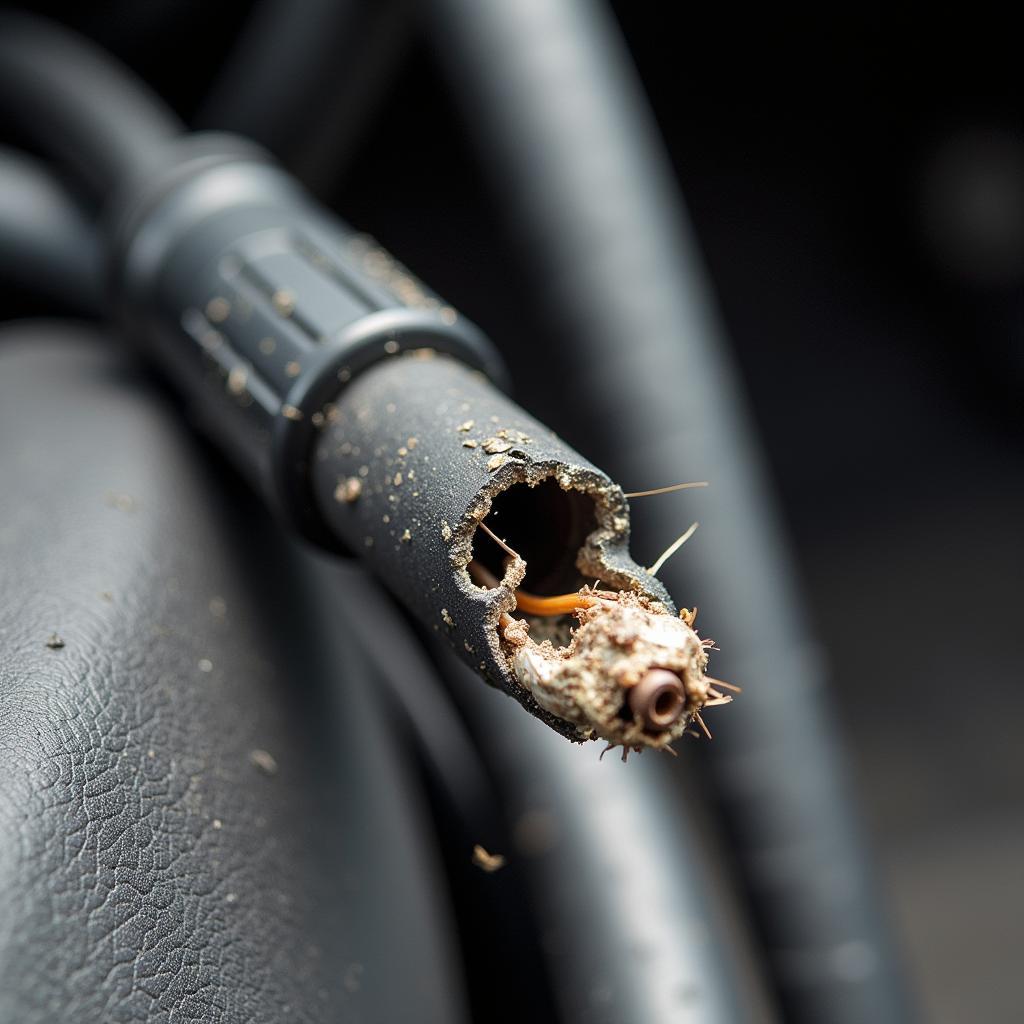Car Weather Stripping Maintenance is crucial for protecting your vehicle’s interior from the elements, ensuring a quiet ride, and preventing costly repairs down the road. Neglecting these seemingly small rubber seals can lead to a host of problems, from water leaks and rust to wind noise and decreased fuel efficiency. This guide will equip you with the knowledge and practical tips to keep your car’s weather stripping in top condition.
After regularly checking your car hood, as discussed in our car hood maintenance guide, you’ll want to pay attention to your weather stripping. Weather stripping is essentially a system of rubber seals that line your car doors, windows, trunk, and hood, creating a barrier against the outside world. Over time, these seals can become brittle, cracked, or torn due to exposure to sun, rain, extreme temperatures, and general wear and tear.
Why is Car Weather Stripping Maintenance Important?
Maintaining your car’s weather stripping is more than just an aesthetic concern. It plays a vital role in preserving the overall health and functionality of your vehicle. Damaged weather stripping can lead to water leaks, which can cause rust and mold growth inside your car. It can also allow dust, pollen, and other allergens to enter the cabin, affecting air quality and potentially causing respiratory issues.
How to Inspect Your Car’s Weather Stripping
Regularly inspecting your car’s weather stripping is the first step in preventative maintenance. Look for signs of wear and tear such as cracks, tears, dryness, or hardening. Pay particular attention to areas that are frequently exposed to the elements, like the door seals and windshield wipers. If you notice any damage, it’s crucial to address it promptly.
“A simple visual inspection can save you a lot of trouble down the road,” says automotive expert John Miller, ASE Certified Master Technician. “Catching minor damage early on can prevent bigger, more expensive repairs later.”
Car Weather Stripping Maintenance: A Step-by-Step Guide
Performing regular maintenance on your car’s weather stripping is a simple DIY task that can save you money and extend the life of your seals.
- Clean the Weather Stripping: Use a mild soap and water solution to remove dirt, grime, and debris. Avoid using harsh chemicals or abrasive cleaners, as these can damage the rubber.
- Dry Thoroughly: After cleaning, dry the weather stripping completely with a clean microfiber cloth. Moisture can accelerate the deterioration of rubber.
- Apply a Rubber Protectant: Applying a specialized rubber protectant helps to keep the rubber supple and prevents it from drying out and cracking. Follow the product instructions carefully.
Choosing the Right Rubber Protectant
Selecting the right rubber protectant is essential for effective car weather stripping maintenance. Look for a product specifically designed for automotive rubber, as these are formulated to withstand the harsh conditions that car weather stripping is exposed to. Avoid using silicone-based products, as these can attract dirt and dust.
“Investing in a quality rubber protectant is like giving your weather stripping a dose of vitamins,” says Sarah Johnson, automotive engineer and consultant. “It helps to keep the rubber healthy and prevents premature aging.”
You might find our guide on car door gasket maintenance helpful for more detailed information on maintaining these important seals. Maintaining your black car’s finish can also be challenging, and you might find some useful tips in our black car maintenance guide.
When to Replace Your Car’s Weather Stripping
While regular maintenance can significantly extend the life of your car’s weather stripping, there comes a time when replacement is necessary. If you notice significant cracking, tearing, or if the seals are no longer effectively preventing water or air leaks, it’s time to consider replacement.
Preventing Future Damage
Preventing future damage to your car’s weather stripping involves a combination of proactive maintenance and mindful practices. Parking your car in a garage or shaded area can protect the seals from the sun’s harmful UV rays. Regularly washing and waxing your car can also help to prevent the buildup of dirt and grime that can damage the rubber.
Conclusion
Car weather stripping maintenance is a small but significant aspect of car ownership. By following these simple steps and investing a little time and effort, you can protect your car from the elements, maintain its value, and enjoy a comfortable and quiet ride. Contact us at AutoTipPro for further assistance. Our phone number is +1 (641) 206-8880, and our office is located at 500 N St Mary’s St, San Antonio, TX 78205, United States.
FAQ:
-
How often should I clean my car’s weather stripping? Every few months, or as needed.
-
Can I use household cleaners on my car’s weather stripping? No, use a specialized rubber protectant.
-
How do I know if my weather stripping needs to be replaced? Look for cracks, tears, and leaks.
-
What causes weather stripping to deteriorate? Sun exposure, extreme temperatures, and general wear and tear.
-
How much does it cost to replace car weather stripping? It varies depending on the car and extent of the damage.
-
Can I replace car weather stripping myself? Yes, it is a relatively simple DIY task.
-
What is the best rubber protectant for car weather stripping? Look for a product specifically designed for automotive rubber.







Leave a Reply